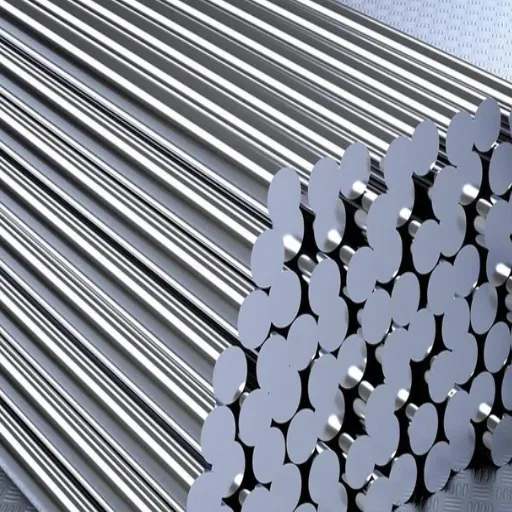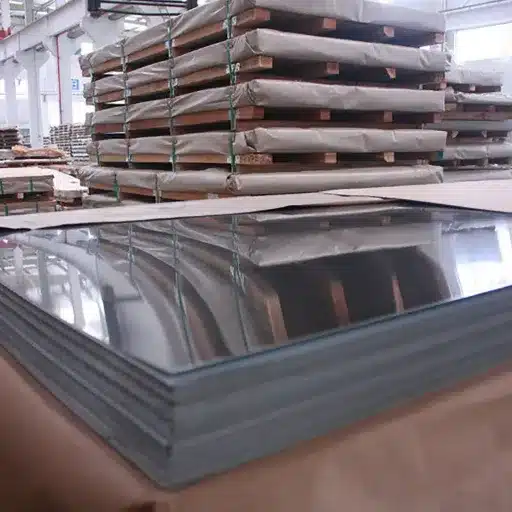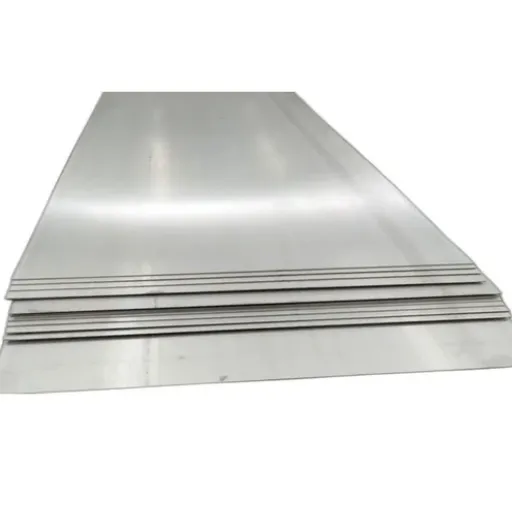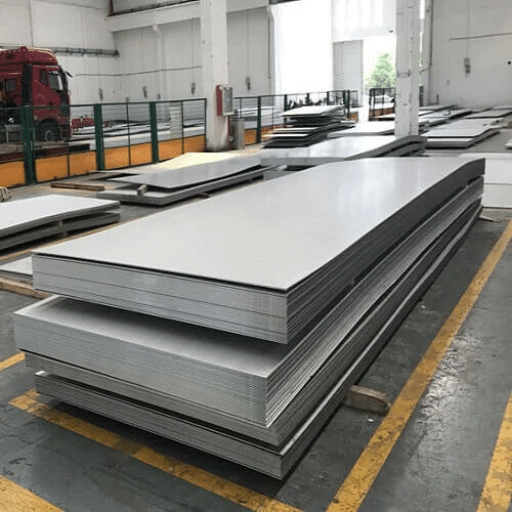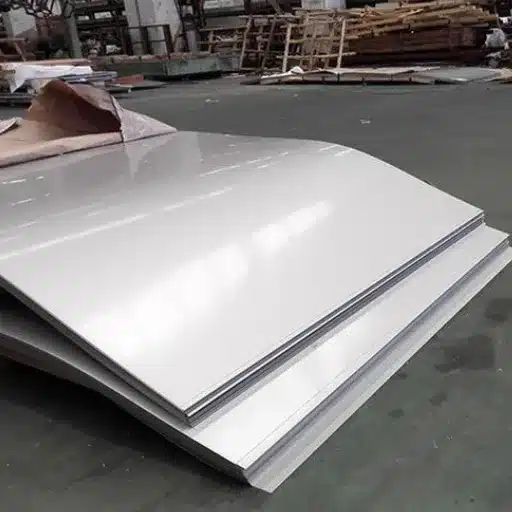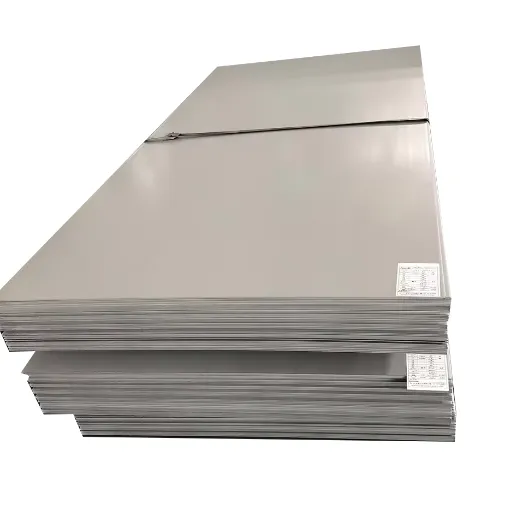When it comes to stainless steel, strength and material composition play a major role in determining application suitability. Among the most common grades for comparative analysis are stainless steels 18-8, 304, and 316, all known for their wear resistance, corrosion resistance, and special properties. What differences exist between them, and which is best suited to your particular needs? This article delves deep into the comparative analysis of the stainless steel grades with respect to their mechanical strength, chemical composition, and applications in the real world. Whether you are an engineer, a manufacturer, or an inquisitive soul interested in materials science, this exhaustive study will provide you elevation toward making an informed choice.
Understanding Stainless Steels
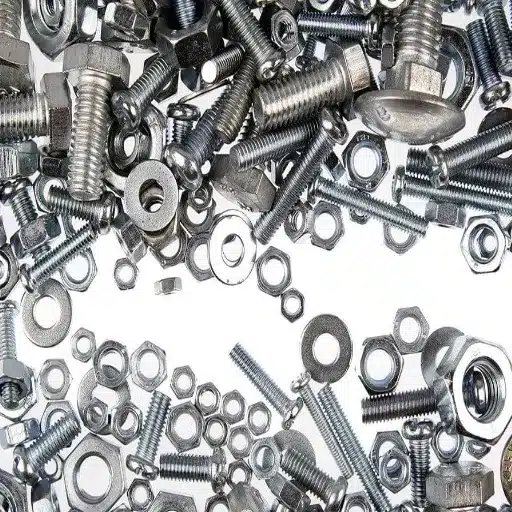
What are Stainless Steels?
Stainless steels are known to be corrosion-resistant alloys mainly composed of iron, with chromium being considered an essential element for imparting the special qualities of resistance against rust and staining. At a minimum level of 10.5%, chromium reacts with oxygen in the atmosphere to essentially form a thin oxide film on the surface of the steel, which acts as a protective barrier. Such an oxide layer is termed the passive film, possessing self-healing abilities and constantly regenerating even if the layer is scratched or damaged; hence, the corrosion-resistance provided by the passive film has long-term durability.
They are classified depending on their microstructure, in a way largely governed by the alloying elements. There are three major types, namely austenitic stainless steels, ferritic stainless steels, and martensitic stainless steels. Austenitic stainless steels, such as those found in 304 and 316 grades, are very versatile and most commonly produced, having the best balance among corrosion resistance, formability, and strength. On the other hand, ferritic steels with comparatively lower chromium content than that of austenitic stainless steels can be magnetic and can resist stress corrosion cracking, while martensitic steels can provide strength and toughness in greater amounts, although generally lower in corrosion resistance.
Given their unique combination of properties, stainless steels can find vast use in industries. Applications range from household things such as cutlery or cookware to aerospace, medical, and construction-critical components. The selection of stainless steel grades mainly depends on environmental conditions and mechanical requirements of the particular application, speaking volumes about the versatility and significance of the material in contemporary engineering and manufacturing.
Overview of the 300 Series
The 300 series stainless steel is among the most common and versatile stainless steel types. This series comprises mostly austenitic stainless steels, which possess exemplary corrosion resistance, durability, and ease of fabrication. The differentiating factor of this alloy is its very high chromium and nickel content, carrying a set of properties geared toward resisting oxidation and harsh chemical environments. Thus, the 300 series can be used for applications such as food processing equipment, storage tanks, architectural structures, and surgical instruments.
The most probably famous steel alloy under this group is the Type 304 stainless steel, which is often considered an industry standard. This alloy features 18% chromium and 8% nickel, presenting a balanced array of strength, corrosion resistance, and cost. In the annealed state, another good feature of Type 304 stainless steel is that it is non-magnetic and serves well where acidic and chloride environments, such as kitchen countertops or chemical storage. Type 316, on the other hand, is another important member of the series, which contains an extra 2-3% molybdenum that markedly enhances resistance to pitting and crevice corrosion, especially in marine or other salt-rich environs.
Also, being austenitic in structure, 300 series stainless steels cannot be hardened by heat treatment but can be easily cold-formed into complicated shapes without sacrificing any factor of strength. This feature promotes the popularity of the 300 series forever, since wherever there arise needs that require their use under severe temperature or corrosive conditions, such as healthcare, construction, and aerospace industries.
Introduction to 18-8 and 316 Stainless Steel
Saying stainless steel is classified by composition and properties, the 18-8 and 316 types are two of the most common types of stainless steel due to their excellent performance in general and specialized applications. The term “18-8” relates to the composition of the alloy, 18% chromium and 8% nickel, and this specifies subtypes of the 300 series stainless steel. This composition embodies excellent corrosion resistance with tensile strength and good weldability, making it suitable for food-processing industries and chemical industries. For example, you will mostly find 18-8 stainless steel in kitchenware, fasteners, and structural applications requiring moderate environmental resistance.
Really close to 18-8 stainless steel chemically, 316 differs by the addition of 2-3% molybdenum. This molecular addition boosts resistance against pitting and crevice corrosion in chloride environments, like marine or high saline conditions. It also remains mechanically excellent at high temperatures, making it suitable for chemical processing equipment for offshore operations and the pharmaceutical industries. Though the addition of molybdenum is meager, it makes a tremendous difference for applications with harsher exposure expectations.
Both 18-8 and 316 stainless steel provide access to all major benefits of the 300 series of stainless steel, like durability, easy working, and oxidation resistance. Yet the choice between these two is usually dictated by specific environmental and operational requirements. For general use in a non-aggressive environment, 18-8 is most definitely an economical option that doesn’t let one down. And where extreme corrosion resistance is required, specifically in chloride-heavy or high-temperature uses, 316 takes all the honors on virtue of its enhanced chemical composition. Both are the apex of the present-day material engineering, providing solutions custom-tailored to very complex problems involving innumerable industries.
Chemical Composition and Properties
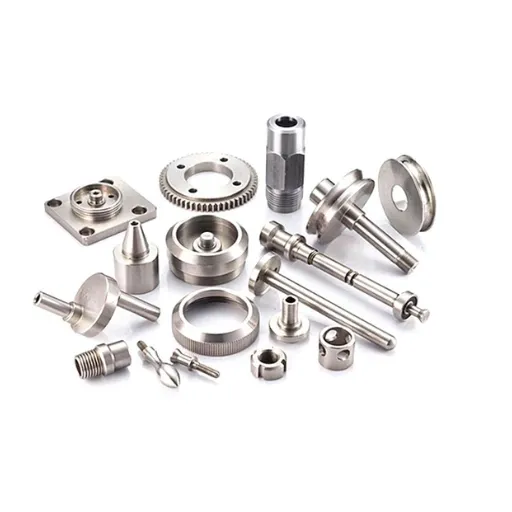
Composition of 18-8 Stainless Steel
It is the makeup of the chromium and nickel that gives 18-8 stainless steel its numeric designation-it contains about 18% chromium and 8% nickel. This combination imparts resistance to oxidation and corrosion while maintaining desirable mechanical properties. Chromium creates a passive protective oxide layer on the surface, shielding the steel from corrosion either by atmosphere or by chemicals, whereas nickel enhances ductility, workability, and strength of the steel.
Other than chromium and nickel, 18-8 stainless steel contains manganese, up to 2%, and carbon, up to 0.08%. Manganese stabilizes during manufacturing and enhances wear resistance. Silicon, up to 1%, and phosphorus, up to 0.045% or less, might also be included. The careful balance of these elements provides incomparable strength with unparalleled weldability and resistance to atmospheric and chemical impact.
Due to its composition, 18-8 stainless steel is an austenitic-grade alloy and, therefore, non-magnetic in nature and exhibits superior resistance to numerous corrosive environments; hence, it finds use in industries ranging from kitchenware and medical instruments to industrial products.
Composition of 316 Stainless Steel
316 stainless steel is a molybdenum-bearing grade of austenitic stainless steel that has improved corrosion resistance and strength properties as compared to the 304 grade. Its nominal chemical composition contains about 16-18% chromium, 10-14% nickel, and 2-3% molybdenum, and trace amounts of elements like manganese, silicon, phosphorus, sulphur, and carbon are added to improve its mechanical properties and stability. Adding molybdenum is very important because it greatly improves the alloy’s resistance to pitting and crevice corrosion, particularly in chloride-laden environments.
The low-carbon 316 variant is mostly called 316L and offers even more advantages for welding as it reduces the possibility of carbide precipitation on grain boundaries, which leads to intergranular corrosion in higher-temperature applications. The maximum carbon content allowed for 316L is 0.03%, as compared to 0.08% for regular 316; hence, it is more suitable in applications requiring high corrosion resistance in the welded portions. Moreover, both 316 and 316L are non-magnetic in the annealed state because of their austenitic microstructures, although a slight amount of magnetism can be induced through cold working.
316 stainless steel, owing to its strong chemical structure, finds wide applications throughout industries. It is used for marine purposes as the molybdenum content enables it to resist attacks from saltwater and brine solutions. Apart from the marine environment, it is often utilized in the chemical processing industry for acidic and caustic substances, as food-processing equipment for sanitary design, and as medical implants because of its biocompatibility. Owing to this alloy’s versatility and durability, it is one of the most common materials used in very difficult working conditions.
Difference Between 18-8 and 316 Chemical Composition
The principal chemical difference between 18-8 and 316 stainless steels is that 316 generally contains molybdenum, and this factor gives 316 enhanced resistance to corrosion, especially from chlorides, whereas 18-8 does not.
| Property | 18-8 | 316 |
|---|---|---|
| Nickel | 8% | 10-14% |
| Chromium | 18% | 16-18% |
| Molybdenum | None | 2-3% |
| Corrosion | Moderate | High |
| Chlorides | Vulnerable | Resistant |
Strength and Durability
Durability in Various Environments
In judging the durability of stainless steels in various environments, the composition differences between 18-8 and 316 stainless steels are of paramount importance. For example, 18-8 stainless steel can serve well in environments of very little exposure to corrosive agents, such as indoors or dry places. The 18-8 stainless steel, with fair corrosion resistance, is not fit for marine or industrial applications where the onset of chlorides, salts, or other corrosive compounds is much more common.
On the contrary, 316 stainless steel is made for severe environments. The 2-3% molybdenum present in its composition offers a brilliant resistance to pitting and crevice corrosion in a chloride-rich environment such as coastal areas, chemical processing plants, and marine applications. Studies show that, when exposed for a long time to saline water and industrial pollutants, 316 stainless steel has significantly higher corrosion resistance than 18-8. In addition, the 316 stainless steel could uphold its structural strength and surface finish over variable temperature and humidity conditions, making it highly versatile for high-pressure and high-moisture situations.
Because of its superior performance, the operational life span of 316 stainless steel is increased considerably, thus needing much less frequent repair and replacement in scenarios involving critical applications. Due to these attributes, it finds increasing favor in industries where reliability and long-term durability are of prime importance, despite its higher cost.
Impact of Composition on Strength
The exact chemical constituents of 316 stainless steel largely determine its strength. Each element can indeed be said to play its own part in giving the material strength when faced with difficulties. The following are the elements of 316 steel and how they affect its capability to resist stresses:
- Chromium (16-18%): Chromium develops corrosion resistance by creating an oxide film over the surface of the steel. This oxide layer prevents the steel from rusting and degrading due to environmental influences and hence maintains its structural integrity in unfavorable conditions.
- Nickel (10-14%): Those who have served their time in materials courses may recall that nickel increases toughness and ductility of materials, allowing them to resist being stressed and deformed by strain without fracturing-so this phenomenon is good for our 316 stainless steel that goes through repeated mechanical loads or impact forces in certain applications.
- Molybdenum (2-3%): Addition of molybdenum treats the steel by imparting a greater resistance to pitting and crevice corrosion, especially in chloride-rich environments such as marine applications or chemical processing plants.
- Carbon (<0.08%): Carbon is present in small quantities to help maintain malleability, but it adds to the tensile strength of the alloy. If there is an excess of carbon, it might bring adverse effects on corrosion resistance; thus, its content is tightly regulated.
- Manganese (max 2%): Ensures better hot-working capacity and imparts strength to steel by enhancing hardness and resistance to wear during mechanical operations.
Thus, 316 stainless steel owes its mechanical properties to the combination of all these elements, which in turn makes it adaptable to strenuous industrial conditions while ensuring high performance in both strength and corrosion resistance.
Corrosion Resistance
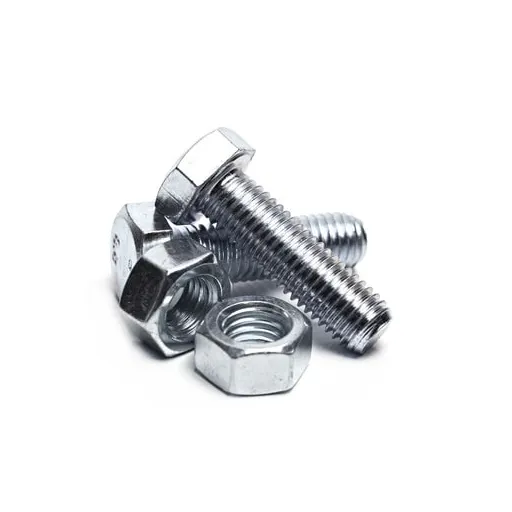
Corrosion Resistance of 18-8 Stainless Steel
18-8 stainless steel refers to the broad class of alloys that contain approximately. 18% chromium and 8% nickel, and is considered highly corrosion-resistant in various environments. The presence of chromium triggers the formation of an oxide layer on the steel surface, which acts as a protective barrier against oxidation and rusting. Since this oxide layer is self-healing, 18-8 alloys do better in neutral to slightly aggressive acid environments and find use in food and beverage processing, chemical processing, and medical applications.
Nickel further enhances the strength of the alloy by countering stress corrosion cracking and pitting, particularly in marine environments. For example, Type 304, being an 18-8 stainless steel commonly found in general household and industrial applications, shows better resistance to the chloride attack in mild-industrial conditions, whereas for environments greatly rich in chlorides, Type 316 is specifically positioned by virtue of the molybdenum contained therein.
Reported laboratory experiments and industrial accounts confirm the fact that 18-8 stainless steel remains resistant to the deleterious effects of prolonged exposure to atmospheric and marine environments. Yet, under situations of high concentration level of the acidic or chloride solutions, durability could better be ensured by using protective coatings, carefully thought-out design considerations, or select alternative higher-grade alloys, such as duplex and super-austenitic stainless steels.
Corrosion Resistance of 316 Stainless Steel
The corrosion resistance of the 316 stainless steel is mainly due to its higher molybdenum concentration, typically falling within 2-3% by weight. This greatly improves resistance to pitting and crevice corrosion in chloride-bearing environments, such as exposure to saltwater or industrial chemicals, thus enabling the material to stand up far better under severe operating conditions than 304 stainless steel, which, however, shows regional corrosion behavior.
The susceptibility of 316 stainless steel to intergranular attack is very low when annealed, and the formation of chromium carbides in the weld heat-affected zones is also inhibited. As a consequence, it retains structural integrity in fabrication-sensitive applications. Furthermore, it resists erosion well in general corrosive environments in many acidic, alkaline, and high-temperature conditions and is thereby very versatile toward chemical, marine, and medical device manufacturing.
But under increased chloride concentration conditions exceeding those for standard grades, the material may be prone to stress corrosion cracking (SCC). Thus, duplex stainless steels or overlays can be employed to ameliorate such a condition. Currently, the mentioned industry data gives attention to the employment of 316L, a low-carbon category, for easy welding and the lesser possibility of being affected by grain boundary corrosion, thus widening its scope of application towards severe environments.
Real-World Applications and Performance
Being one of the most corrosion-resistant stainless steels, mostly 316L is used in industries where mechanical strength and corrosion resistance are equally required. For example, the chemical process industry favors 316L due to its capacity to remain unscathed in the presence of strong acids such as sulfuric, hydrochloric, and tartaric acids at moderate concentrations. Likewise, in marine engineering, since the alloy possesses superior resistance to pitting and crevice corrosion, it is deemed durable under chloride-laden conditions like exposure to seawater, though special attention ought to be given to ascertain that the high salinity could not put it at risk for stress corrosion cracking (SCC).
More recently, it has been demonstrated that 316L fulfills the pharmaceutical and food processing industries owing to excellent cleanliness characteristics, resistance to microbiological agents, and non-reactivity. Its low carbon content minimizes carbide precipitation during welding, allowing the wide use of 316L for manufacturing large storage tanks and precision piping systems. While being exploited in performance evaluations of high-temperature applications like heat exchangers, 316L has been found to retain its mechanical properties at elevated operating temperatures and remains the most reliable material available for solution heat-transfer arrangements.
Its good adaptability is further seen in medical engineering, where it is highly favored for implants and surgical instruments. Here, biocompatibility and resistance to body fluid-induced corrosion have greatly decreased corrosion and allergy potential. As the industries grow to modern standards for safety and operational requirements, the alloy finds itself reckoned amongst the most popular high-performance materials in diversified engineering sectors.
Applications Across Industries
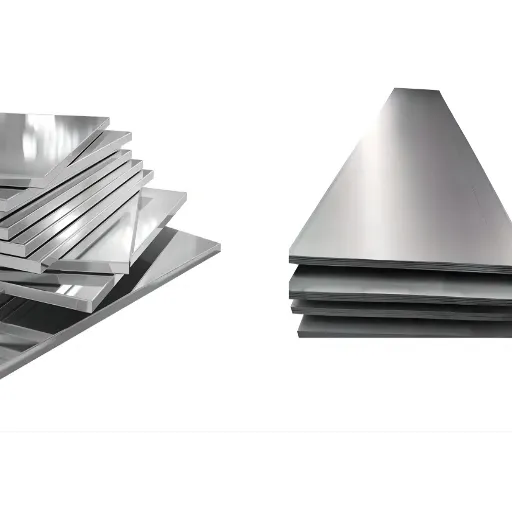
Construction Industry Use Cases
In the construction trade, stainless steel 316L finds widespread and critical application because of its durability and corrosion resistance. In other words, under situations of very harsh weather conditions, high humidity, or environments prone to chemical action, this metal is highly valued. 316L structural members, such as beams, railings, and exterior cladding, stand a better chance of performing in coastal, industrial, or high-pollution areas where ordinary materials fail. Oxidative and corrosive degradations are beyond the scope of the stainless steel 316L, thereby ensuring diminished maintenance and more life, which decreases the operational costs.
Also, the presence of molybdenum greatly enhances the resistance of 316L against chloride-induced pitting and crevice corrosion, rendering it suitable for marine construction works, bridges, and offshore platforms. These are applications that require materials that are exposed continuously to a high saline and abrasive environment, hence not able to maintain the structural integrity of the works. Moreover, in urban constructions, 316L is used for high-traffic pedestrian pathways, elevator panels, and escalator trusses, where its beautiful finish and mechanical strength stand up well to the rigors imposed on these public infrastructures.
From my point of view, in construction projects threatened severely by environmental factors, 316L stainless steel is very suitable to provide reliability and safety. Having consistently performed for decades to meet functional and regulatory requirements, I am of the view that the use of materials like 316L promotes engineering advancement and, therefore, modern engineering greatly supports sustainability and resilience.
Automotive Industry Applications
With such advanced materials as 316L stainless steel, the automotive industry finds many uses emphasizing durability, efficiency, and safety. Let us now look into the five key applications of 316L in the automotive field:
- 1
Exhaust Systems: The high corrosion resistance and heat tolerance of the 316L stainless steel make it an ideal choice for exhaust systems, especially when fighting against damage caused by exhaust gases and high temperatures. This increases the lifespan of the system and further reduces upkeep costs. - 2
Fuel Tanks: Being chemically non-reactive and resistant to corrosive environments, this material suits a fuel tank. It ensures the structural integrity of the tank even when subjected to aggressions from fuel additives or biodiesel blends, which abate potential leaking and contamination of the same. - 3
Structural Components: It possesses excellent mechanical strength and fatigue resistance, which render it ideal for structural components such as chassis parts and suspension systems. Through such an application, the material further enhances the performance of a vehicle, as well as ensuring that it can safely be stressed. - 4
Hydraulic Tubes: Automotive hydraulic systems often function at high pressures; thus, materials are sought to resist physical stresses and corrosion. Stainless steel 316L is selected for hydraulic tubes because of its ability to withstand long periods of adverse operating conditions. - 5
Battery Enclosures for Electric Vehicles (EVs): With the advent of electric vehicles, 316L has been the foremost material considered in battery enclosures. The excellent heat resistance, environmental durability associated with this material guarantee the protection of battery systems against thermal and mechanical stresses, thus ensuring the safety and performance of EVs.
The application list itself showcases how utmost materials such as 316L stainless steel are critical to making automotive solutions that promise performance under reliability, longevity, and compliance with strict industry standards.
Medical and Marine Environments
The uses for high-end materials such as 316L stainless steel span medical and marine areas, due to the properties of corrosion resistance, biocompatibility, and mechanical strength. In the medical application, this stainless steel is most widely used for surgical implants, orthopedic devices, and hospital equipment. Its low carbon content decreases intergranular corrosion during sterilization processes, thereby assuring medical tools can withstand rigorous cleaning protocols for prolonged time periods; biocompatibility further makes it viable for application as an implant since it minimizes adverse reactions in the human organism while maintaining strength and stability through varying physiological conditions.
Similarly, in marine industries, 316L stainless steel is employed to resist harsh aquatic environments, being highly resistant to pitting and crevice corrosion induced by chloride-containing seawater and saline atmospheres. It finds frequent application in the manufacture of various ship fittings, underwater pipelines, and offshore platform components. 316L’s molybdenum affords this grade of stainless steel an increased resistance to localized corrosion under highly aggressive environments where ordinary steels would be deemed useless to ensure long-term performance and retention of structural integrity of marine structures, thereby limiting maintenance and cost.
Having applications spread over the medical and marine industries only emphasizes how versatile and reliable 316L stainless steel is in those demanding sectors where safety, durability, and environmental concerns are of utmost significance. Utilizing the advanced properties, industries are offered solutions that are cost-effective throughout a product’s lifecycle, as well as conforming to stringent regulations. Contemporary advancements in material sciences have further improved the manufacturing and applications of 316L stainless steel, ensuring that it keeps up with the emerging challenges in these two key industries.
References
-
The Changes of Structure and Mechanical Properties of 18-8 Series Stainless Steels After Prolonged Aging
Published on J-STAGE, this study examines the structural and mechanical property changes in 18-8 series stainless steels, including 316, under prolonged aging. -
Effects of Cold Work and Heat Treatment Upon the Properties of 18-8 Stainless Steel
Available on ProQuest, this paper explores the effects of cold work and heat treatment on the mechanical and magnetic properties of 18-8 stainless steel. -
Effect of Pitting Corrosion on the Mechanical Properties of 316 Grade Stainless Steel
Published in ScienceDirect, this article investigates how pitting corrosion impacts the mechanical properties of 316 stainless steel, highlighting its resilience compared to 18-8. - Click here to read more.
Frequently Asked Questions (FAQ)
Q
What is the primary difference in strength between 18-8 and 316 stainless steel?
A: The primary difference in strength between 18-8 and 316 stainless steel lies in their competing chemical formulas. While the 18-8 stainless steel offers good strength and corrosion resistance with 18 percent chromium and 8 percent nickel, the presence of molybdenum in the 316 stainless steel increases the corrosion resistance of the latter in harsher environments. Thus, it finds applications where corrosive chemicals are used.
Q
How does the strength of 18-8 compare with 304 stainless steel?
A: Strength-wise, 18-8 stainless steel is comparable to 304 stainless steel since their compositions are very close; however, the terms 18-8 stainless steel and 304 stainless steel are often used synonymously since both satisfy the requirements of corrosion resistance and machinability. Strength-wise, there is very little difference, which becomes more so in specific applications that concern their use rather than material specifications.
Q
What application makes 316 stainless steel more favorable as compared to 18-8?
A: One would prefer 316 stainless steel when they require greater corrosion resistance, for instance, at sea or when processing food. With these distinctive qualifications, 316 stainless is suited for harsh environments where corrosive chemicals are prevalent. In contrast, 18-8 is generally used for kitchen utensils and other general purposes.
Q
What are the distinctive properties of an 18-8 grade stainless steel?
A: The distinctive properties of 18-8 grade stainless steel include good corrosion resistance, formability, and strength. This type of steel finds applications in the fabrication of kitchen utensils and fasteners because it is easy to machine and has a good appearance.
Q
Can 18-8 stainless steel be considered fit for high-temperature applications?
A: While resistance to moderate temperatures is an attribute of 18-8 stainless steel, usage is discouraged for high-temperature applications. The 316 stainless steel or carbon-rich options like 304H would be better for such applications, given their performance as a function of elevated temperature and resistance to oxidation.
Q
What is the importance of molybdenum in 316 stainless steel?
A: Molybdenum added to a 316 stainless steel enhances its corrosion resistance, mainly the corrosion by pitting or crevice attack in chloride environments. This makes 316 a more suitable choice where the presence of marine environments and corrosive chemicals is are important consideration, unlike 18-8 that lacks such an additive element.
Q
How does the machinability of 18-8 stainless steel compare with that of 316?
A: The machinability of 18-8 stainless steel is considered better than that of 316 stainless steel. Both grades are indeed easily machinable. Still, in comparison, 18-8 stainless steel may:-in view of its composition- be easier to cut and form, which has resulted in it being the preferred material for machining processes requiring intricate designs and short completion times.
Q
Is 304L stainless steel a better alternative to 18-8 for specific applications?
A: 304L stainless steel is a low-carbon version of 304 and can be better wherever welding is required or exposure is in a corrosive environment. It is similar in properties to 18-8 but has enhanced resistance to intergranular corrosion and hence is best applied in food processing and chemical manufacturing.
Q
What role does the chromium content play in the strength of stainless steel?
A: The content of chromium is found in 18% chromium grade stainless steels like 18-8 and 304 stainless steel, which serves to build up a protective layer on the steel surface. This protective layer helps the steel to get better in corrosion resistance and thereby gives strength to the material. The chromium, as in 316, at an increased level, means the steel should become more durable, particularly in aggressive environments.
Conclusion
Understanding the differences between 18-8 and 316 stainless steel is crucial for making informed material selection decisions. While 18-8 offers excellent general-purpose performance, 316’s enhanced corrosion resistance makes it the superior choice for demanding environments involving chlorides, marine conditions, and chemical processing applications.

